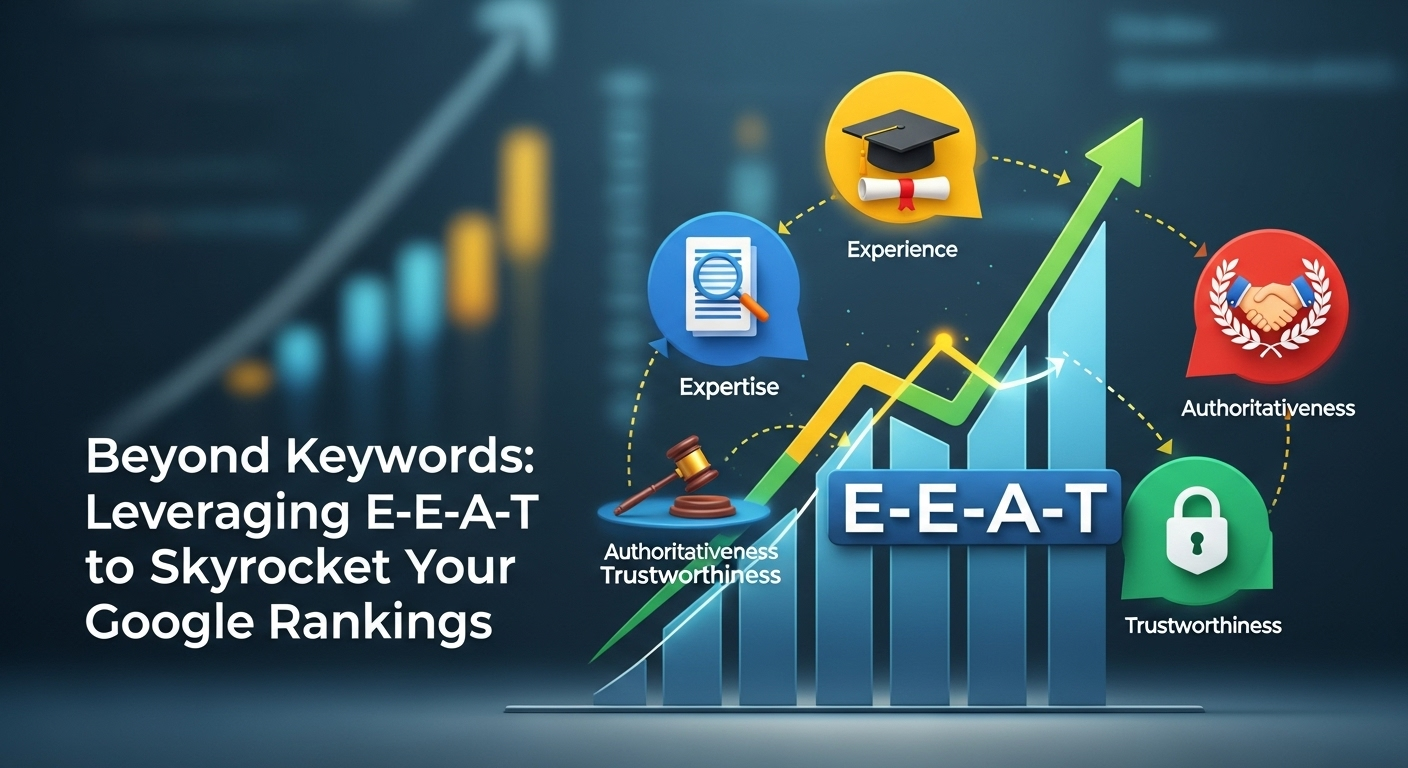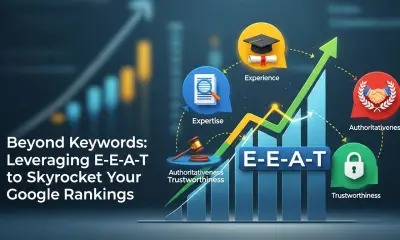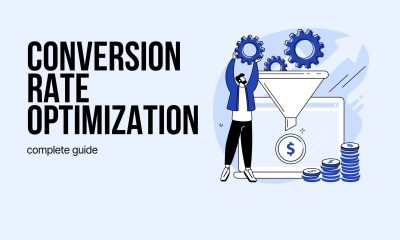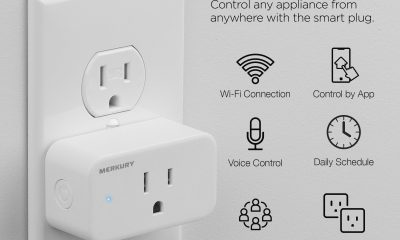Guides
How to Skyrocket Your SEO with Google’s E-E-A-T

Introduction
SEO has come a long way from the days of keyword stuffing and link farming. Today, search engines—especially Google—care more about who is creating content and why it deserves to be trusted. That’s where E-E-A-T comes in. Short for Experience, Expertise, Authoritativeness, and Trustworthiness, this framework is used by Google to evaluate content quality.
For businesses, bloggers, and creators, understanding E-E-A-T isn’t optional anymore. It’s a roadmap for building credibility, improving rankings, and earning user trust. Whether you’re writing a product review, publishing a health guide, or running an e-commerce store, showing strong E-E-A-T signals can make or break your visibility.
In this article, we’ll break down what E-E-A-T really means, why it matters for SEO, and practical steps you can take to implement it. The goal: to help you create content that ranks higher, earns trust, and provides lasting value to your audience.
What Is E-E-A-T in SEO?
E-E-A-T stands for:
-
Experience – Demonstrating first-hand knowledge or personal involvement in the subject.
-
Expertise – Showing skill, qualifications, or deep knowledge of the topic.
-
Authoritativeness – Being recognized by others as a reliable, go-to source.
-
Trustworthiness – Building confidence through accuracy, transparency, and reliability.
Google uses E-E-A-T as part of its quality guidelines to decide whether your site is a trustworthy source of information. It’s especially important for “Your Money or Your Life” (YMYL) topics such as health, finance, and safety, but it also applies to every type of content that aims to inform or persuade.
Breaking Down the Four Pillars
1. Experience
Users and search engines value content that comes from someone who has actually done what they are writing about. For example, a travel guide written by someone who has visited the destination feels more authentic than one that copies generic information.
-
Share personal stories and real-world examples.
-
Add photos, videos, or screenshots that prove involvement.
-
Write case studies or reviews from first-hand perspective.
2. Expertise
Expertise shows that the content is produced by someone who understands the subject deeply.
-
Highlight author qualifications and credentials.
-
Use well-researched facts and accurate data.
-
Provide in-depth answers that go beyond surface-level tips.
3. Authoritativeness
Authority comes from recognition. If others in your field reference you, link to you, or recommend your content, Google sees you as a trusted leader.
-
Build high-quality backlinks.
-
Get mentioned by reputable websites, organizations, or influencers.
-
Maintain a consistent presence in your niche (guest posts, podcasts, events).
4. Trustworthiness
Trust is the foundation of all the other elements. Without it, even expert or authoritative content loses impact.
-
Secure your website with HTTPS.
-
Be transparent about who you are—add About and Contact pages.
-
Keep information accurate and up-to-date.
-
Avoid clickbait, misleading claims, or overly aggressive promotion.
How E-E-A-T Fits into Modern SEO
Traditional SEO focused on technical elements—keywords, meta tags, site speed, and backlinks. These are still important, but Google’s ranking systems now reward content that demonstrates real value and trustworthiness.
Here’s how E-E-A-T connects with SEO practices:
-
Content creation → E-E-A-T encourages writing for humans first, search engines second.
-
On-page SEO → Structured pages with clear headings, easy readability, and supporting media show professionalism and trust.
-
Technical SEO → Secure, mobile-friendly, fast websites support user trust and signal reliability.
-
Off-page SEO → Reviews, mentions, and backlinks improve authority.
-
User engagement → Content that satisfies search intent keeps visitors longer, reducing bounce rate and strengthening trust.
Practical Ways to Implement E-E-A-T
Step 1: Audit Your Content
-
Look for outdated articles that need refreshing.
-
Identify pages missing author names, bios, or references.
-
Check for thin or duplicate content that doesn’t add real value.
Step 2: Add Author Transparency
-
Write author bios with credentials, experience, and photos.
-
Link to professional profiles or related work.
-
For sensitive topics, consider expert reviewers.
Step 3: Refresh and Expand Content
-
Update statistics, images, and references.
-
Add examples, case studies, and actionable advice.
-
Turn short blogs into comprehensive guides.
Step 4: Build Authority
-
Guest post on relevant industry blogs.
-
Collaborate with influencers or subject matter experts.
-
Collect and display testimonials, reviews, and awards.
Step 5: Optimize for Trust
-
Secure your website (HTTPS).
-
Display clear privacy, refund, and contact information.
-
Reduce intrusive ads and pop-ups.
-
Ensure content accuracy and cite reliable sources.
Common SEO Mistakes That Undermine E-E-A-T
-
Publishing anonymous or ghost-written content → Always attribute content to real authors.
-
Relying on AI content without human input → Use AI as support, but edit and add unique insights.
-
Neglecting content updates → Outdated info hurts credibility fast.
-
Chasing quantity over quality → Thin, repetitive posts dilute trust.
-
Ignoring site usability → Slow, messy, or unsafe websites drive users away.
User-First SEO in Action
Imagine two sites about healthy eating:
-
Site A posts generic advice like “eat more vegetables” without showing experience or references.
-
Site B features a certified nutritionist, provides recipes they personally tested, cites recent studies, and shares testimonials from clients.
Which site will rank higher and earn more trust? Clearly Site B. That’s the power of aligning SEO with E-E-A-T.
Read More: Conversion Optimization: Guide for Higher Conversions
Conclusion
SEO is no longer just about algorithms—it’s about people. Google’s E-E-A-T framework makes this clear: experience, expertise, authoritativeness, and trustworthiness are what separate average content from content that truly ranks.
When you publish content that reflects your real-world experience, backs it up with expert knowledge, builds authority through recognition, and demonstrates transparency, you create a foundation for long-term success. This approach not only satisfies Google but also meets your audience’s needs, which is the real goal of SEO.
Start with small steps: update old content, showcase your team’s expertise, and make your website secure and user-friendly. Over time, these improvements will pay off in stronger rankings, higher traffic, and loyal users who see you as a trusted resource.
In the end, SEO with E-E-A-T isn’t just about climbing search results—it’s about building credibility, lasting relationships, and a brand that people can rely on.
FAQs
1. What does “experience” mean in SEO?
It means showing you’ve personally done what you’re writing about. Share real stories, photos, reviews, or examples to prove first-hand knowledge.
2. Do I need professional credentials to show expertise?
Not always. Credentials help for sensitive topics, but in many cases, deep research, accuracy, and proven results are enough to demonstrate expertise.
3. How do I become an authority in my niche?
Build high-quality content, earn backlinks from reputable sites, collaborate with other experts, and maintain a strong presence in your industry.
4. How can I improve my site’s trustworthiness?
Make your site secure, provide transparent author and company information, avoid misleading claims, and keep all content updated and accurate.
5. How often should I update my SEO content?
Review important pages every 6–12 months. Update statistics, fix broken links, and refresh old posts to stay current and trustworthy.
-

 Gadgets2 years ago
Gadgets2 years agoDoes Nest Thermostats Contain Cameras Or Microphones? Is It Safe For you?
-

 Guides1 year ago
Guides1 year ago10 Best Apps To Control All Your Smart Home Devices.
-

 Gadgets2 years ago
Gadgets2 years agoWhat Is The Purpose Of Red Button On The SimpliSafe Keypad?
-

 Gadgets2 years ago
Gadgets2 years agoComplete Guide About Equalizer settings for Samsung-Soundbar
-

 Accessories2 years ago
Accessories2 years agoBlink Camera’s Temperature Sensor Settings, and More
-

 Solutions3 years ago
Solutions3 years agoWhy is My Samsung TV Picture So Dark? Exploring the Possible Causes
-

 Gadgets3 years ago
Gadgets3 years agoFitbit Symbols Meaning: What Do The Fitbit Icons Mean?
-

 Accessories2 years ago
Accessories2 years agoCan Siri Control Samsung Televisions And Are Samsung TVs Homekit Compliant?























































































































